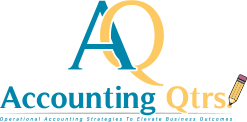Strategic Business Planning: Setting Goals and Achieving Milestones

Strategic Business Planning: Setting Goals and Achieving Milestones
Thinking of expanding your business? Before you dive in, consider this: Are you confident that your plans are truly setting the stage for your business’s future success? To navigate the path to growth effectively, it’s crucial to have a clear grasp of your strategies.
But here is the twist: do you really understand the difference between a business plan and a strategic plan? Many of you might think they are the same thing, but later on, you will realize the distinction and the value of these plans. Don’t worry; you don’t need to go anywhere because through this blog, we will discuss strategic business planning instead of just business planning and learn how it can drive your business towards sustainable growth.
Business plan Vs Strategic Plan
In today’s competitive world, organizations approach strategic planning to achieve success in a shorter time. You might be wondering, what do they follow, where do they go, and what kind of strategies lead to such success? Let’s delve into the significant difference between a business plan and a strategic business plan.
A business plan primarily focuses on the viability of the company and typically spans no more than a year. Business plans encompass regular business activities from the inception of a business, involving securing funding and developing all aspects of the business before starting. At this stage, you need to study the market and set practical financial targets as you create your business plan.
On the other hand, a strategic plan serves as a flexible roadmap for your small business to reach its goals. It helps you measure your company’s performance, strengths, and weaknesses over time. By revisiting your plans regularly, you can analyze and improve your marketing, sales, products, operations, and revenue targets to achieve the desired result.
Setting Goals
The main pillar of any strategic plan is goal setting. Goals act as the guiding beacons that light the way to success. But this statement doesn’t relays on any kind of goals; they must be SMART: Specific, Measurable, Achievable, Relevant, and Time-bound.
• Specific
Goals should be clear and precise. Instead of saying “increase revenue,” a specific goal might be “increase monthly revenue by 15%.”
• Measurable
Goals should have metrics to track progress. In the example above, the metric is the percentage increase in revenue.
• Achievable
Goals should be challenging but attainable. Setting an unrealistic goal can be demoralizing.
• Relevant
Goals should align with your business’s overall mission and strategy. They need to make sense in the context of your organization’s objectives.
• Time-bound
Goals should have a deadline because without a timeframe, there’s less urgency to work toward them.
The Planning Process
Strategic business planning involves several key steps:
• Assessment
Begin by evaluating your current business situation like what’s working well, and what needs improvement? What are your strengths, weaknesses, opportunities, and threats (SWOT analysis)?
• Mission and Vision
Revisit or establish your mission and vision statements. These statements should guide all your actions and decisions.
• Strategy Development
Develop strategies to reach your goals. This may involve marketing initiatives, product development, cost-cutting measures, or other tactics.
• Action Plan
Create a detailed action plan that outlines who is responsible for each task, deadlines, and the resources required and put your plan into action and monitor progress.
• Evaluation
Regularly assess your progress. Are you meeting your milestones and making headway toward your goals?
Final Thoughts
Strategic business planning is a vital process that sets businesses on a path to success by focusing on long-term goals, performance evaluation, and flexibility. It distinguishes itself from traditional business planning by its emphasis on adaptability and continuous improvement. By setting goals and following a structured planning process, businesses can better navigate the complexities of today’s competitive landscape and achieve sustainable growth.

